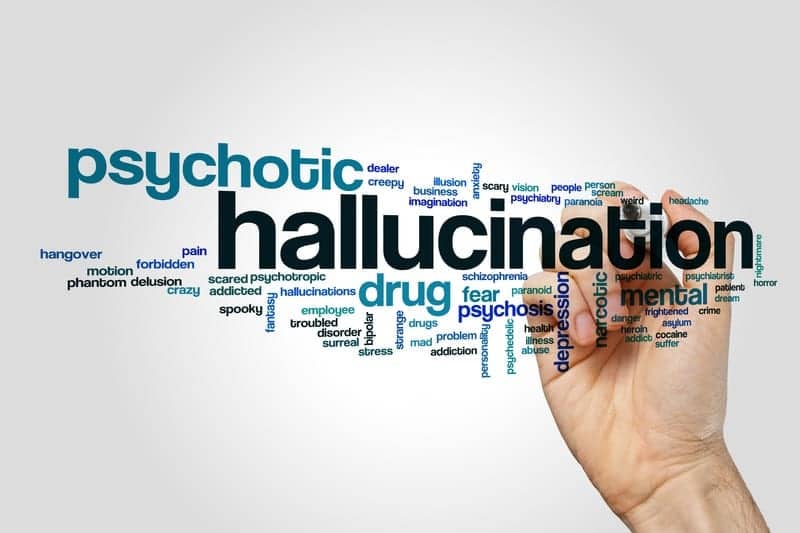Scientists are developing a “brain stress test” for evaluating the mental status of patients with Parkinson’s disease. It involves awakening the “ghosts” hidden in specific networks of the brain to predict the onset of hallucinations.
Scientists from Ecole Polytechnique Fédérale de Lausanne (EPFL) are providing a new way to evaluate the onset of hallucinations in patients with Parkinson’s disease with the help of a newly developed brain stress test, focusing their research on presence hallucinations. They also provide evidence of a promising biomarker for predicting the severity of the disease’s progression.
“We’re developing something similar to a cardiac stress test, but instead of testing the heart, we’re testing the brain.”
— EPFL neuroscientist Olaf Blanke
The results of their three-tier study, involving 56 patients affected by the disease and recruited at several centers in Switzerland and Spain, were published recently in Science Translational Medicine, according to a media release from EPFL.
“An important challenge with hallucinations is that they occur spontaneously, that their occurrence cannot be predicted, that many patients may not openly report them, possibly out of fear, and that it is currently very challenging for physicians to quantify their occurrence, phenomenology and intensity.
“We have established a robotic-medical device and procedure that can provoke a specific hallucination, the presence hallucination, safely and under controlled conditions in a hospital setting.”
— Fosco Bernasconi, co-first author of the paper
A Spectrum of Hallucinations in Parkinson’s
Parkinson’s disease is well-known for leading to slowness of movement, muscle stiffness, as well as uncontrollable shaking of the limbs. But alterations of movement are far from being the only symptom of the disease.
A few years into retirement and after an operation for treating Parkinson’s disease, Joseph Rey from Geneva began to have strange and recurrent experiences, characterized by feelings of being accompanied by one or several people, either behind him or by his side. The intensity of these experiences was so convincing that he frequently had to turn around, only to find that no one was there.
Rey, who had a career in tourism, has never been bothered by the hallucinations, he notes in the release.
“I call them my guardian angels. They do me no harm. They follow me around. It’s reassuring in a way, because I am not alone.”
Maurizio De Levrano, based in Martigny and specialized in industriel, public and luxury lighting, has now been living with Parkinson’s disease since 2015. He too experiences hallucinations.
“It happens when I am alone, cooking or sitting at the table. I see spiders of sorts falling from the ceiling out of the corner of my eye. I know very well that they are not there, but instinctively, I am always compelled to turn and look. I’ve also felt a presence behind me. It felt like the ghost of my mother.”
Both Rey and De Levrano experience these hallucinations on top of debilitating movement deficits that are typical of Parkinson’s disease.
Presence Hallucinations Underdiagnosed
Hallucinations are frequent in the disease, affecting both both women and men. People with Parkinson’s disease tend to experience hallucinations of some sort, like presence hallucinations, or guardian angels in Rey’s case, or visitations as with De Levrano. Hallucinations of the peripheral vision that involve sightings of individuals, animals, or spiders, passing by quickly in the corner of one’s eye, are also possible, as are visual misperception of objects, or even fully colored and formed visual hallucinations.
Parkinson’s disease is a progressive neurodegenerative disease that has been traditionally defined as a movement disorder, characterized by tremor, rigidity and slowness of movement. But many patients also suffer from a wide array of symptoms that are not associated with movement and some may go on to suffer from mental symptoms like psychosis, depression, apathy, cognitive decline and even dementia.
A growing body of clinical evidence suggests that hallucinations might be precursors to these more severe mental and cognitive symptoms. But hallucinations, like presence hallucinations, remain underdiagnosed. It may be that patients are reluctant to report them to their doctors, and that non-specialized clinicians fail to ask about them or lack rigorous tools to assess them, per the release.
Robotic Procedure for Awakening ‘Ghosts’
In a 2014 study, Blanke discovered that it was possible to induce presence hallucinations in healthy individuals, within the setting of his neuroscience laboratory. When subjected to a very robotic procedure, using specific movement and somatosensory signals, healthy individuals reported feelings of being accompanied by some sort of presence or person.
It was a natural step for Blanke to wonder if his robotic procedure would consistently induce presence hallucinations in individuals with Parkinson’s disease given the prevalence of mental alterations and especially presence hallucinations in the disease. Indeed, an improved version of the robotic device and procedure is at the core of their “brain stress test” and the results of their latest study, the release continues.
Towards a Clinical Tool
In the first part of the STM study, the scientists start by establishing that the “brain stress test” is an appropriate tool for inducing presence hallucinations in patients with Parkinson’s disease. The robotic procedure involves asking the participant to make repeated poking gestures. A robotic arm behind the patient imitates these gestures on the patient’s back.
When both the gestures and the poking felt on the back are in synchrony, the brain is able to make sense of the observed spatial dissonance and the patient reports nothing out of the ordinary. But when the gestures and poking on the back are out of synchrony, both healthy participants and patients with Parkinson’s disease report presence hallucinations.
More importantly, the scientists find that patients with pre-existing presence hallucinations have heightened sensitivity to the robotic stimulation compared to patients with no prior hallucinations. The “brain stress test,” aka “robot ghost test” or “hallucination stress test” as Blanke calls it, was tested on 26 patients with Parkinson’s disease.
“When I had no control over the robot touching my back, I felt a presence, like there was somebody with me, touching my back. It is not quite the same presence as my guardian angels. I feel the presence of my angels, but I never know when they will appear, and my angels have never touched me.”
— Joseph Rey, who was also one of the 26 patients involved in the study
Neural Networks and Biomarkers
With a robotic “brain stress test” in their toolbox for the second part of the STM study, the scientists went on to identify the neural networks in the brain responsible for presence hallucinations in healthy patients. The region includes three fronto-temporal cortical brain regions that the scientists refer to as the presence hallucination network.
Building on their discoveries in the first and second part of the study, the scientists embarked on a third part involving a second group of 30 new patients with Parkinson’s disease that were investigated together with the team of Dr. Jaime Kulisevsky at Sant Pau Hospital (Barcelona, Spain). The joint teams of EPFL scientists and Sant Pau clinicians were able to accurately predict the severity of the patients’ symptoms based on brain scans.
“Adapting the robotic device and procedure to the scanner allowed us to identify a brain network that is relevant for presence hallucinations in patients with Parkinson’s disease and that could potentially serve as a biomarker for more severe forms of the disease associated with hallucinations and cognitive deficits.”
— Eva Blondiaux, co-first author of the study
Future Prospects and Clinical Outlook
The EPFL scientists may not have discovered a cure, but they have invented a new method that reveals the underlying mechanisms of hallucinations in Parkinson’s disease. It provides rigorous insight into the severity of mental and cognitive impairments related to a specific form of the disease.
Their vision is to ultimately give medical practitioners the tools they need to test their patients’ sensitivity to hallucinations, providing an objective and early marker rather than relying on today’s standard of verbal exchange.
For Rey, the hallucinations become more and more vivid as the disease progresses, the release continues.
“I have been on many adventures with my guardian angels. The most difficult part about Parkinson’s disease is being diagnosed with an illness that can only get worse, but I continue to hope that we will one day find a cure.”
De Levrano likens Parkinson’s disease to a dark tunnel that keeps on getting longer and longer as the disease progresses.
“My father has Parkinson’s disease. One day I learned from a nurse that he felt sorry and responsible that I got the disease. So I went to him, and I told him not to be sorry. The disease has been one of the biggest gifts of my life.
“I used to be macho. Before, I would have never been able to understand someone else’s pain. Being ill has been very humbling. I am a better person because of Parkinson’s, because of the obstacles that arise from my own body and nervous system, and that is why I am driven to participate in research like this.”
[Source(s): Ecole Polytechnique Fédérale de Lausanne, Science Daily]
Related Content:
End Parkinson’s Hallucinations with Chemo Nausea Treatment?
These Five Genes Play Role in Lewy Body Dementia, Parkinson’s
Parkinson’s Dementia: It’s All in the Gut





